What is API Monitoring? How to Effectively Manage APIs
- Published on
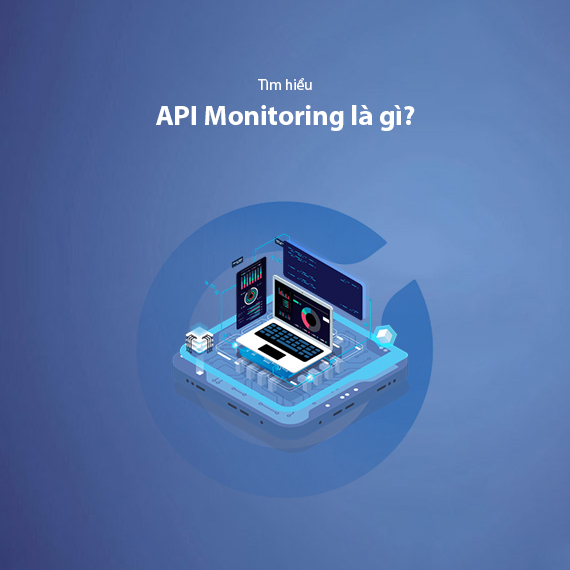
- What is API Monitoring?
- The Importance of API Monitoring in Modern Systems
- The Role of API Monitoring in Ensuring Performance and Reliability
- How Does API Monitoring Work?
- Key Metrics to Monitor in API Monitoring
- Types of API Monitoring
- Popular API Monitoring Tools
- Guide to Implementing API Monitoring
- Challenges of Using API Monitoring
- Long-Term Benefits of API Monitoring
- Conclusion
What is API Monitoring?
API Monitoring is the process of tracking and monitoring Application Programming Interfaces (APIs) to ensure they operate reliably, meet performance expectations, and do not experience issues during use. APIs act as a bridge enabling applications and systems to communicate with each other, making their monitoring essential to detect and address problems promptly.
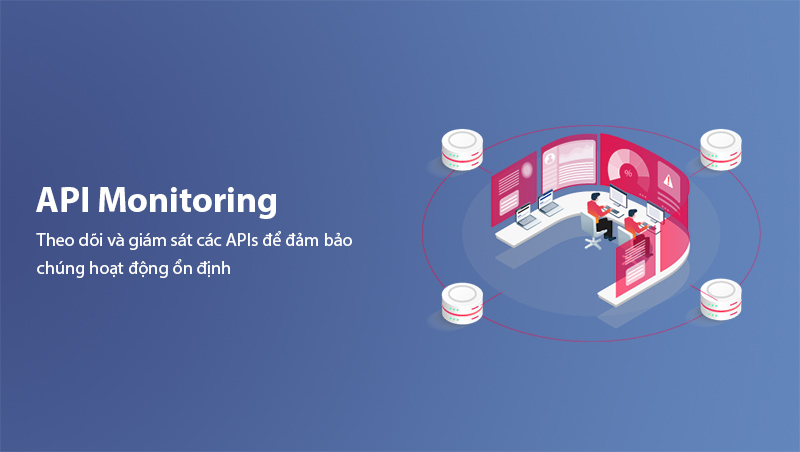
Through API Monitoring, developers can track key metrics such as response time, error rate, and API availability, ensuring optimal performance for users. This process helps maintain the stability of services and applications, ranging from internal systems to public APIs serving end users.
API Monitoring not only helps identify errors but also provides detailed insights into API performance, enabling developers and operations teams to optimize and improve them. In fact, major companies like Google and Amazon use API Monitoring to manage the thousands of APIs they utilize daily.
When implementing API Monitoring, it’s crucial to set up automated alerts that notify you immediately when issues arise, minimizing downtime and ensuring service continuity.
To ensure the API operates stably and without errors during monitoring, API testing beforehand is crucial. Discover more in the article What is API Testing?.
The Importance of API Monitoring in Modern Systems
In modern systems, today’s applications and services increasingly rely on APIs to communicate and share data. These APIs connect various services, from internal systems to third-party services, creating a complex network of applications. Therefore, API Monitoring has become an indispensable part of maintaining system stability and performance.
Ensuring APIs function continuously and efficiently is not only critical for end users but also directly impacts the entire business’s operations. When an API experiences issues, it can immediately affect user experience and even disrupt critical business processes. Using API Monitoring helps detect errors promptly, minimizing downtime and restoring service quickly.
Additionally, API Monitoring helps developers and operations teams optimize API performance. Monitoring data provides key metrics like response times, error rates, and API load-handling capabilities. Analyzing these metrics improves reliability, security, and scalability, building a more robust system capable of meeting user demands.
In summary, in a modern system, implementing API Monitoring not only helps quickly identify and address errors but also enhances performance, ensuring services maintain stable and efficient delivery.
The Role of API Monitoring in Ensuring Performance and Reliability
API Monitoring plays an essential role in ensuring the performance and reliability of services and applications that rely on APIs. With APIs now serving as a critical connection between systems and delivering services to users, monitoring and ensuring their smooth operation is indispensable.
One of the most critical factors API Monitoring ensures is response time. Long response times can disrupt the user experience, reduce satisfaction, and lead to customer loss. Continuous monitoring helps promptly identify performance issues and intervene quickly to optimize the system.
API Monitoring also maintains API reliability by continuously checking service availability. Issues related to networking, servers, or other factors can reduce API accessibility, impacting the entire system. Monitoring quickly detects and resolves problems before they escalate into major incidents, ensuring the system remains stable and operational.
An example of the importance of API Monitoring in ensuring performance is when cloud-based services like AWS or Azure face issues. Monitoring API performance helps operations teams detect problems immediately and address them before they affect users.
Therefore, API Monitoring not only helps ensure optimal performance but also keeps your system ready and reliable, improving user trust and experience.
How Does API Monitoring Work?
API Monitoring works by continuously tracking and collecting data from API endpoints to analyze their performance and functionality. The goal is to ensure APIs remain stable and avoid issues that could affect users. Below is a basic overview of how API Monitoring operates:
-
Sending periodic API requests: Monitoring tools automatically send requests to API endpoints at fixed intervals. This process simulates user or system interactions with the API, checking its availability and performance.
-
Collecting response data: When a request is sent, the API responds with specific results (e.g., data, error codes, messages). API Monitoring gathers this data and analyzes metrics such as response time and HTTP status codes (200, 404, 500, etc.) to assess the success of requests.
-
Tracking response time: One of the key metrics monitored is response time. Excessive response times can indicate performance issues, high load, or misconfiguration. Monitoring tools trigger alerts if response times exceed acceptable thresholds.
-
Detecting errors and triggering alerts: If any errors occur, such as 500 errors (server error) or 404 errors (not found), the system detects them and triggers alerts immediately. This allows the operations team to resolve issues quickly before they affect users.
-
Reporting and analysis: API Monitoring tools generate detailed reports on API performance and reliability. These reports help developers and operations teams analyze trends and improve APIs over time. They also assist in planning optimizations for future API versions.
Through this process, API Monitoring ensures that APIs remain stable and efficient while quickly detecting and addressing errors, preventing service disruptions, and minimizing the negative impact on users.
Key Metrics to Monitor in API Monitoring
To ensure API Monitoring is truly effective, there are several important metrics that must be tracked and monitored. These metrics not only help detect issues promptly but also optimize performance and security for APIs. Below are the key metrics to monitor during API Monitoring:
-
Response Time: Response time is one of the most critical metrics for API monitoring. It measures the time from when an API receives a request to when it returns a result to the user or application. Long response times can degrade user experience and impact overall system performance. API Monitoring continuously tracks response times and triggers alerts when they exceed acceptable thresholds.
-
Error Rate: Error rate indicates the number of failed requests relative to the total number of requests sent. Errors like 500 (Internal Server Error) or 404 (Not Found) can indicate server problems or unavailable endpoints. Monitoring the error rate helps identify issues early and minimize user impact.
-
Uptime: Uptime measures the percentage of time the API is functioning normally without any issues. A highly available API ensures consistent and reliable service for users. Monitoring uptime is crucial for maintaining service quality and minimizing interruptions.
-
Load Performance: API Monitoring should also track API performance under high load conditions. This ensures the API can handle a large number of simultaneous requests without performance degradation. Monitoring load performance helps anticipate when APIs may need scaling or structural optimization to meet user demand.
-
Security: Another critical aspect is monitoring security issues. Threats such as DDoS attacks (Distributed Denial of Service) can severely impact APIs and disrupt services. API Monitoring can detect abnormal behavior early, preventing security breaches.
-
Compatibility: Ensuring API compatibility between versions and with external services is also important. Making sure APIs are compatible with other systems and applications avoids unexpected issues when changes occur in the software ecosystem.
Monitoring these metrics not only helps track API status but also optimizes and safeguards APIs, creating a robust, stable, and reliable service for users.
Types of API Monitoring
When implementing API Monitoring, there are various methods and tools available to monitor the performance and reliability of APIs. Each type of API Monitoring serves different purposes, from checking API availability to analyzing performance under high load. Below are the common types of API Monitoring you can apply:
-
Synthetic Monitoring:
- Synthetic Monitoring involves automatically sending requests to API endpoints at regular intervals without real user input. This simulates user actions and tests APIs under controlled conditions, helping detect potential issues before they impact real users.
- Advantages: Detects errors early and checks API status across different regions even when no users are actively using the API.
- Disadvantages: Does not accurately reflect real user behavior.
-
Real User Monitoring (RUM):
- RUM monitors APIs based on actual user data. RUM tools collect information about how users interact with APIs in real time, including response times, error rates, and other performance metrics.
- Advantages: Provides an accurate view of API performance from real user perspectives, helping optimize user experience.
- Disadvantages: Cannot detect issues before real users encounter them.
-
Performance Monitoring:
- Performance Monitoring focuses on tracking API performance metrics such as response time, load capacity, error rates, and resource usage. It is critical for maintaining high API performance, especially under heavy traffic or complex requests.
- Advantages: Helps optimize API performance to meet user needs.
- Disadvantages: Requires robust monitoring systems to track multiple metrics simultaneously.
-
Security Monitoring:
- Security Monitoring focuses on protecting APIs from security threats such as DDoS attacks, data breaches, and other vulnerabilities. Monitoring API security helps detect unusual behavior early and prevents attacks before they cause significant damage.
- Advantages: Protects data and API systems from security threats.
- Disadvantages: Requires specialized security tools and may involve privacy and data security challenges.
-
API Logging:
- API Logging monitors API activity by recording all events related to the API, including requests and responses. Analyzing these logs helps identify issues or irregularities in API behavior.
- Advantages: Provides detailed insights into API events, making error analysis and troubleshooting easier.
- Disadvantages: Collecting and analyzing logs can be resource-intensive and require significant storage.
Each type of API Monitoring has its own features and applications, and selecting the right method will help you optimize API monitoring effectiveness. Depending on your goals (performance optimization, security, or availability), you can combine the above methods to build a comprehensive monitoring strategy.
Popular API Monitoring Tools
To implement API Monitoring effectively, selecting the right tool is crucial. These tools provide automated API monitoring features, continuously tracking factors such as performance, errors, and API availability. Below are some popular API Monitoring tools you can use:
-
Postman:
- Postman is not only an API development tool but also offers robust API monitoring capabilities. You can easily create test cases and schedule them to monitor APIs throughout development and post-deployment. Postman provides detailed reports on performance and error rates.
- Advantages: Easy to use, user-friendly interface, and robust testing and monitoring features.
- Disadvantages: While useful in a development environment, it’s not a large-scale API monitoring solution for enterprises.
-
New Relic:
- New Relic is a comprehensive monitoring tool that helps track the performance of applications and APIs in real-time. It provides detailed reports on API response times, error rates, and performance issues, enabling in-depth analysis of potential problems.
- Advantages: Offers deep analytics and helps monitor and optimize APIs in production environments.
- Disadvantages: Can be costly for small and medium-sized businesses.
-
Datadog:
- Datadog is a powerful monitoring tool that allows you to track API performance metrics, including response times and error rates. Datadog integrates with services like AWS, Google Cloud, and Docker, enabling API monitoring in multi-platform environments.
- Advantages: Easily integrates with cloud and DevOps systems, offering precise reporting and alerts.
- Disadvantages: Requires technical knowledge to use and can be complex for new users.
-
Pingdom:
- Pingdom is a simple and easy-to-use API availability monitoring tool. It offers features to monitor API uptime and response times, helping quickly detect issues and minimize downtime.
- Advantages: Simple, user-friendly interface, ideal for small to medium-sized businesses.
- Disadvantages: Performance and security monitoring features are not as robust as other tools.
-
Grafana + Prometheus:
- Grafana combined with Prometheus is a popular open-source toolset for monitoring APIs and systems. Prometheus collects API performance metrics, while Grafana provides dashboards to visualize the data.
- Advantages: Completely free and highly customizable, supports performance and security monitoring in complex environments.
- Disadvantages: Requires technical knowledge and is more complex to configure compared to other tools.
-
APImetrics:
- APImetrics is a specialized API monitoring tool that tracks API performance and reliability from the end-user perspective. It provides insights into API speed, usability, and common errors.
- Advantages: Focused on monitoring APIs from the end-user perspective, making it useful for assessing quality of experience.
- Disadvantages: Does not support advanced features for organizations with complex requirements.
Choosing the right API monitoring tool for your system's requirements and scale will help keep your APIs running efficiently, ready to handle any issues, and optimized for performance and security.
Guide to Implementing API Monitoring
Implementing API Monitoring is not overly complicated, but to ensure effective monitoring, you need to follow the right steps and choose the appropriate tools. Below is a basic guide to implementing API Monitoring in your system:
-
Define Monitoring Goals:
- Before starting, identify the specific goals of your API monitoring. Are you tracking performance, usability, security, or just availability? Clear goals will help you choose tools and establish monitoring processes effectively.
-
Select an API Monitoring Tool:
- As mentioned earlier, there are numerous API monitoring tools available. Depending on your project requirements and system scale, you can select tools like New Relic, Datadog, Postman, or open-source tools like Grafana + Prometheus. Carefully consider budget, features, and scalability when choosing a tool.
-
Configure Monitoring Metrics:
- After selecting a monitoring tool, the next step is to configure the metrics you want to track. Some key metrics include:
- Response Time: Measures how long an API takes to return a result.
- Error Rate: Tracks errors such as 500 (Internal Server Error) and 404 (Not Found).
- Availability: Checks whether the API is ready to serve requests.
- Performance under High Load: Evaluates the API's ability to handle multiple simultaneous requests.
- After selecting a monitoring tool, the next step is to configure the metrics you want to track. Some key metrics include:
-
Set Alerts and Notifications:
- Alerts are a vital part of API Monitoring. Set thresholds for the metrics you monitor and configure alerts when these thresholds are exceeded. For example, if response time exceeds 2 seconds, you can receive immediate notifications via email or other communication channels.
- Ensure alerts provide detailed information to facilitate analysis and troubleshooting.
-
Perform Regular API Testing:
- To ensure availability and performance, schedule periodic tests for API endpoints. Monitoring tools will send requests to the API at the configured intervals and record the responses.
- Conduct load tests to evaluate the API's ability to handle high user demand or complex requests.
-
Analyze and Optimize:
- After implementing API Monitoring, you will collect extensive data on API performance and status. Use the reports and analyses to identify weaknesses and optimize the API.
- If APIs show high error rates or long response times, take measures such as improving code structure, expanding capacity, or optimizing the database.
-
Evaluate and Improve Regularly:
- API Monitoring is not a one-time task. Periodically evaluate the effectiveness of the monitoring process and tools in use. Regularly update monitoring thresholds and optimize configurations based on real-world conditions and system growth needs.
By following these steps, you can implement API Monitoring effectively and maintain stable API operations, improving user experience and ensuring your system is always ready to serve.
Challenges of Using API Monitoring
While API Monitoring plays a vital role in maintaining API performance and reliability, implementing and using it is not without challenges. Developers and system administrators must tackle several issues during API monitoring. Below are some common challenges of using API Monitoring:
-
Massive Data Volume:
- Monitoring APIs generates a significant amount of data across various metrics such as response times, error rates, and security-related events. Analyzing and processing this data volume can become a major issue, especially when your API system serves a large user base or handles requests from multiple sources.
- Challenge: Requires robust tools and data processing capabilities to avoid overload. Tools like Datadog and Grafana can address this issue but require advanced configuration and analysis skills.
-
Monitoring APIs in Complex Environments:
- Modern API systems often consist of microservices, cloud services, and external systems. Monitoring all these APIs simultaneously, especially when deployed on different platforms, can be challenging. Non-uniform APIs and complex interconnections increase monitoring and analysis difficulty.
- Challenge: Requires a comprehensive monitoring strategy and suitable tools to monitor all system components. Integration with third-party monitoring tools can be a solution, but this requires regular configuration and maintenance.
-
Handling False Alarms:
- A common issue in API Monitoring is false alarms. These alerts can arise from minor system changes or temporary issues, causing the development or operations team to waste time checking and resolving them. This not only wastes time but can also reduce the overall effectiveness of monitoring.
- Challenge: Refine alert thresholds to be precise and suitable for each API type. This helps minimize false alarms and increase notification accuracy.
-
Security and Access:
- API Monitoring also faces challenges related to security and access to monitoring data. Monitoring tools often require access to sensitive data such as logs, error codes, and user information. If not adequately protected, this data can become a target for attacks.
- Challenge: Implement strict security measures to protect monitoring data. This includes data encryption, tight access controls, and using effective API security tools.
-
Maintenance and Scalability Costs:
- Maintaining and scaling an API monitoring system can become a cost issue, especially when using commercial monitoring tools. Services like Datadog and New Relic offer robust features but costs can escalate quickly when monitoring large numbers of APIs or increasing monitoring detail levels.
- Challenge: Carefully consider budget when implementing API Monitoring. Choosing appropriate tools and optimizing configurations will help minimize costs while maintaining effective monitoring.
Although there are challenges in using API Monitoring, these issues can be resolved with careful planning and selecting suitable monitoring tools. When implemented correctly, API Monitoring will help you maintain service quality and ensure your API system operates efficiently.
Long-Term Benefits of API Monitoring
Implementing and maintaining API Monitoring not only provides short-term benefits in detecting and resolving issues but also ensures your system operates effectively and sustainably over time. Below are some long-term benefits of API Monitoring for your system:
-
API Performance Optimization:
- One of the most obvious benefits of API Monitoring is improving API performance. With the ability to monitor response times, error rates, and other metrics, you can identify performance issues early and make improvements. This ensures APIs run smoothly and respond promptly to users, even during high load situations.
- Long-term benefit: Increased user satisfaction, improved experience, and customer retention.
-
Minimized Downtime:
- API Monitoring helps detect issues early, reducing system downtime. By identifying errors and problems in APIs before they significantly impact, you can minimize damage and recover quickly.
- Long-term benefit: Ensures the system is always ready to serve, reducing potential losses from unforeseen incidents.
-
Improved API Security:
- API Monitoring not only tracks performance but also helps detect security threats. Monitoring APIs helps identify abnormal behavior, such as requests from strange IP addresses or DDoS attacks. This protects user data and prevents security vulnerabilities before exploitation.
- Long-term benefit: Reduced risk of attacks and protection of critical information for users and organizations.
-
Easier Scalability and Adaptability:
- As your API system grows, expanding capacity and adapting to new requirements becomes easier with API Monitoring. You’ll have an overview of API operations and can make decisions about increasing service capabilities when needed. Continuous monitoring data helps make necessary adjustments, from expanding resources to optimizing code.
- Long-term benefit: Ensures sustainable development and flexibility for the API system as demands increase.
-
Easy Analysis and Reporting:
- Another long-term benefit of API Monitoring is collecting and storing data from monitoring metrics. API monitoring tools provide detailed reports on API performance and errors, enabling in-depth issue analysis. This not only helps resolve issues quickly but also improves future API development processes.
- Long-term benefit: Provides critical insights to optimize API development strategy and system performance.
-
Enhanced Reliability and Customer Trust:
- A stable and reliable API helps build user and customer trust. Monitoring and ensuring API availability builds brand credibility and strengthens customer trust. When customers know your APIs are reliable and secure, they will have long-term confidence in your products and services.
- Long-term benefit: Sustainable growth and enhanced brand value.
Thus, API Monitoring not only provides short-term benefits in identifying and fixing issues but also helps maintain a stable, efficient, and secure system over time. Implementing and maintaining API monitoring creates a solid foundation to support the sustainable development of applications and services in the future.
Conclusion
In summary, API Monitoring is an indispensable component in maintaining and optimizing the performance of modern API systems. Through basic implementation steps, API monitoring helps you quickly identify issues, optimize API operations, ensure security, and enhance user experience. Choosing the right monitoring tool, setting up metrics, and configuring alerts will help the system operate stably and minimize potential risks.
In an increasingly complex technological environment, API Monitoring provides a complete solution to ensure API availability, stability, and security. By leveraging API monitoring tools and processes, you can achieve success in API management and lay the foundation for the sustainable growth of your business.
Latest Posts

Lesson 26. How to Use break, continue, and return in Java | Learn Java Basics
A guide on how to use break, continue, and return statements in Java to control loops and program execution flow effectively.

Lesson 25. The do-while Loop in Java | Learn Basic Java
A detailed guide on the do-while loop in Java, including syntax, usage, examples, and comparison with the while loop.

Lesson 24. How to Convert Decimal to Binary in Java | Learn Basic Java
A guide on how to convert numbers from the decimal system to the binary system in Java using different methods, with illustrative examples.

Lesson 23. How to Use the While Loop in Java | Learn Java Basics
Learn how to use the while loop in Java with syntax, real-world examples, and practical applications in Java programming.
Related Posts
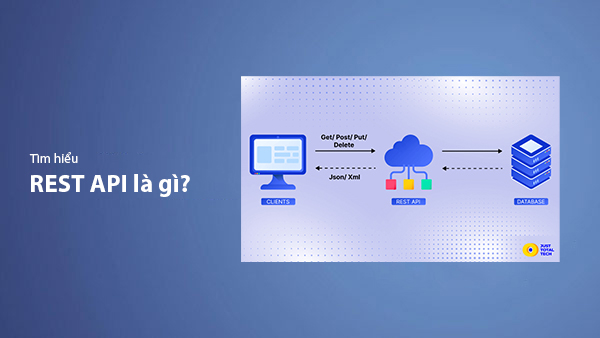
What is REST API? Complete A-Z Knowledge About REST API
REST API is one of the essential concepts that every backend developer needs to fully understand. This article provides comprehensive knowledge about REST API, including its definition, principles of operation, and how to build a standard RESTful API.
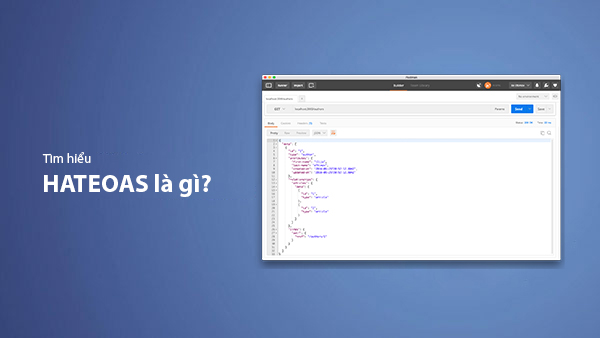
What is HATEOAS? How to Build APIs Using HATEOAS
Learn about HATEOAS, an important concept in API development, and how to build APIs using HATEOAS to improve interactivity and scalability.

What Is GraphQL? The Advantages of GraphQL Over REST API
Explore GraphQL, a modern API technology, and why it outperforms REST API in many web development scenarios.
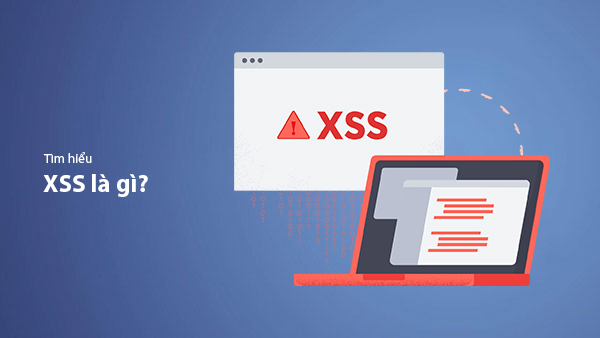
What is XSS? Signs of Detection and Effective Prevention Methods
Learn about XSS, signs of detection, and effective prevention methods for XSS attacks in websites.

